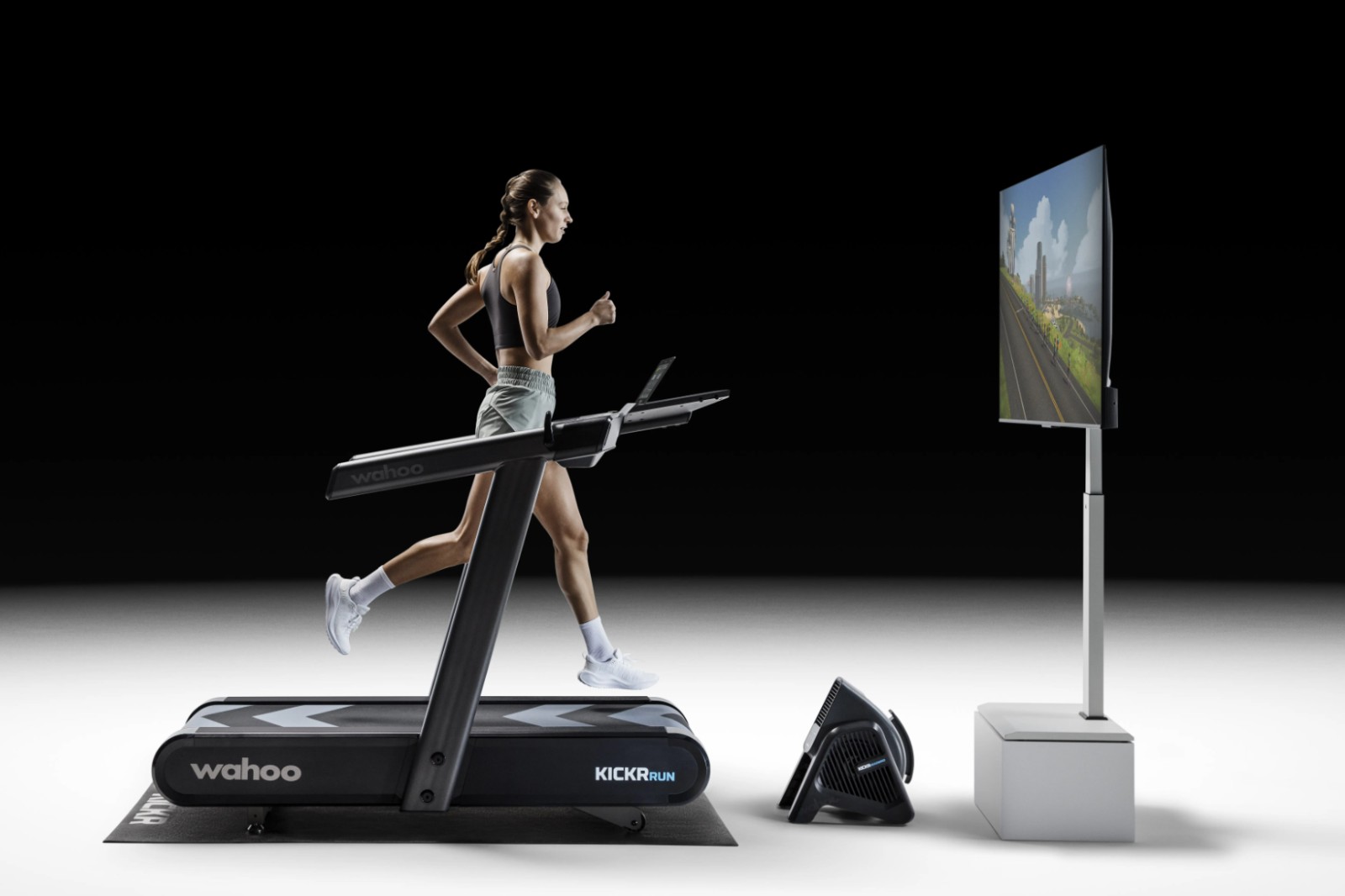
We independently review everything we recommend. When you buy through our links, we may earn a commission.
Wahoo’s self-guided treadmill with RunFree mode
In-house setup provided by a delivery team
$4,999 (yes, really)

THOMAS: At this point in human history, we all know what a treadmill is. Some people love them, and many hate them — calling them dreadmills — but if you’re serious about running, you’ll probably wind up on one sooner or later. For the past 17 years, I’ve used your standard belt-driven treadmills with displays that lit up red dots as I ran around a two-dimensional track. Then, a few years ago, I started using a foot pod synced with Zwift to capture data and connect it to Strava. The accuracy was hit or miss, but at least I could make the otherwise bland run sync digitally while I watched my avatar run through virtual landscapes.
Anyway, back to the history lesson. The treadmill hasn’t changed much since it was invented in 1889 by Zuntz and Lehrmann. Sure, it’s gotten slightly higher tech over the years, picking up better motors, trying new surfaces, and adding manual controls for elevation and speed, but the basics are still the same. Now, though, the most advanced versions of the treadmill come from NordicTrack and Peloton, and they allow you to do instructor-led workouts if you’re willing to pay for a membership.
The next leap forward in treadmill training, however, looks like it’s come from Wahoo. Its new Kickr Run might look the same as any other treadmill, but I’ve quickly learned just how different it is. In some ways, it almost feels like running in the real world. Here’s why.
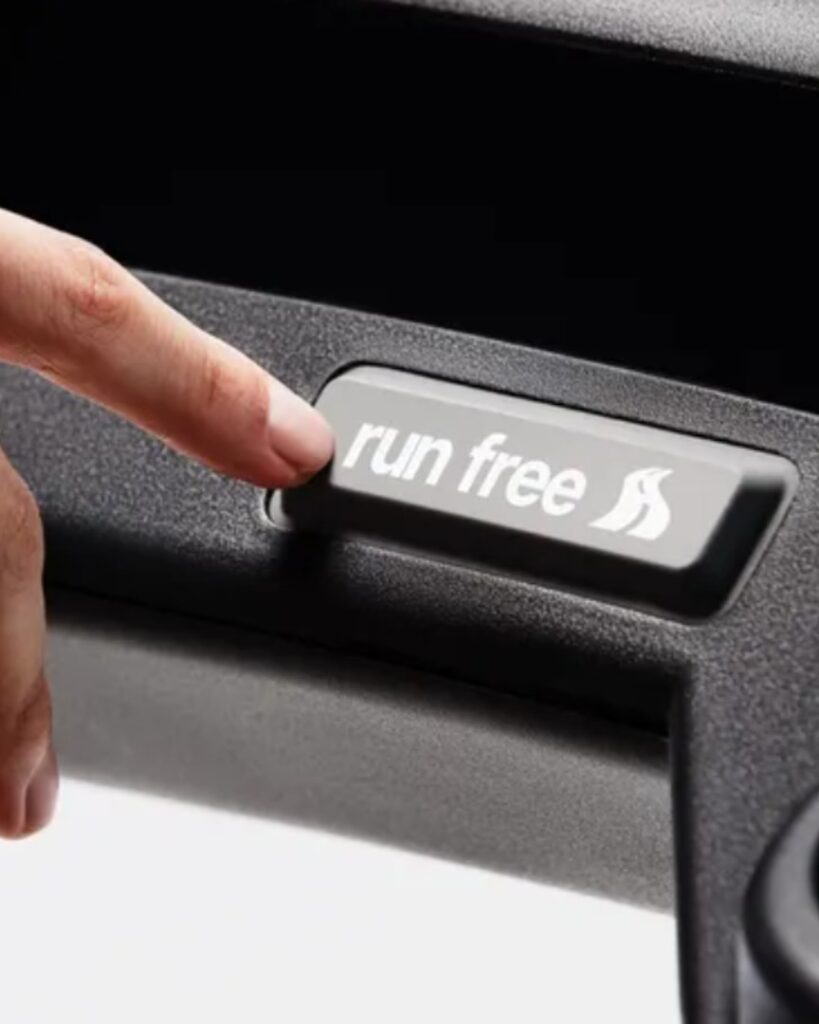
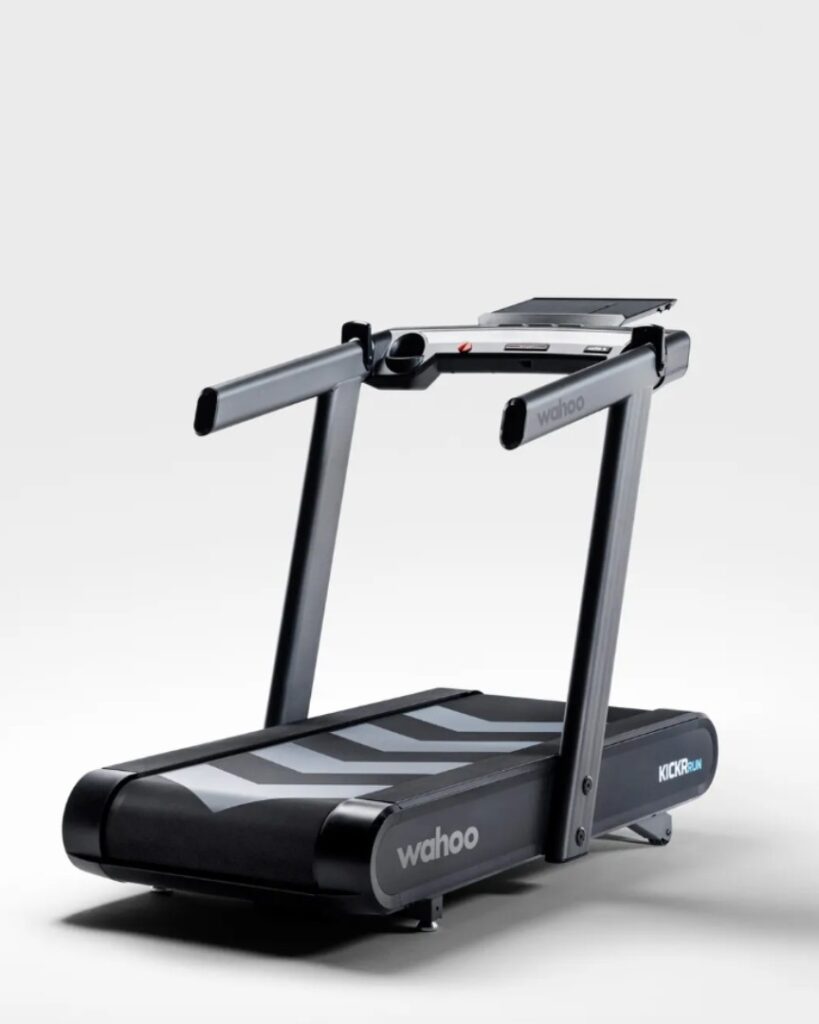
THOMAS: When you purchase the Wahoo Kickr Run, a special team delivers and assembles the treadmill right there in your home. The footprint of the Kickr Run itself is about that of a normal old dreadmill — 72″ x 38″ x 58″ — with a weight of about 410 lbs, which made me glad to have professionals carrying it around.
From there, you have to connect your in-home Wi-Fi, download any firmware updates, and connect to the Wahoo app as well as any other apps you might use with the treadmill. Then, it’s all up to you — including providing a display to track your Zwift workout or a TV to keep your mind entertained. Unfortunately, there’s no display built into the Kickr Run, so you’ll need an iPad, laptop, or smart TV.
After that, though, you’re ready to go.
Buy The Treadmill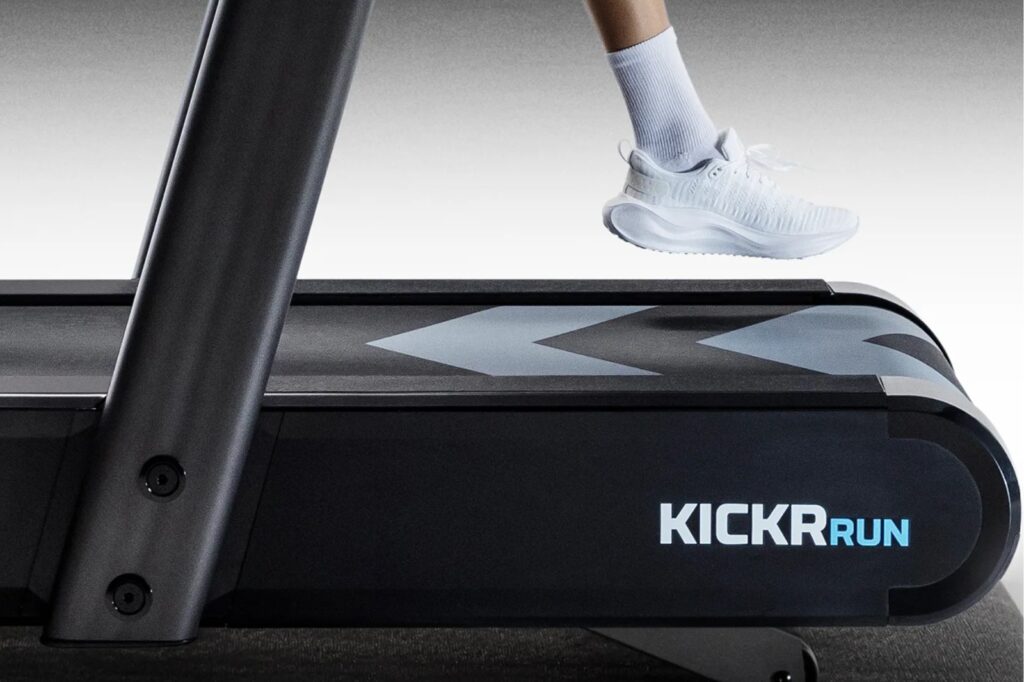
THOMAS: I’ve been using the Kickr Run for a couple of months now, and I’ve gotta say I love it for workouts. Even before the Kickr Run, I enjoyed the control you can achieve with a treadmill, locking in the pace and cadence to maintain a consistent speed. Now, with the Kickr Run connected to Zwift (or anything else like Zwift), the experience goes a step further.
Most of the time, I simply allow the virtual world around me to control the incline and decline settings on the treadmill, then shift into RunFree mode once I’m ready to start my reps. If you’re not familiar, RunFree is the Kickr Run’s halo feature — the cherry on top of the ice cream sundae. It basically puts you in charge of the treadmill’s speed simply by running faster or slower in place.
This takes some practice to get used to. A sensor on the treadmill measures your body position and speeds the belt up as you get closer, inversely slowing down as you get further away. Finding the sweet spot doesn’t come naturally and needs to be practiced.
I started using RunFree in short bursts and increased the use once I felt more comfortable. When it’s time for an interval, I switch RunFree back off by using the speed paddle on the right side to lock myself in. It usually takes a couple of taps, but I can find the desired pace pretty quickly these days.
Here’s where the difference comes in for those indoor workouts. Zwift has climbs and descents in its virtual world, and the Kickr run is gonna put you through them. You might be in the middle of a 400-meter interval and run into a 4% grade hill. Guess what? You’re goin’ up. The Kickr Run begins to lift and pitch the deck automatically, and you feel the extra effort it takes to hold the pace. If you’re lucky, you may even get a decline in the workout, which will then cause the Kickr Run to simulate running downhill. I was amazed by how much it feels like actual road conditions.
I think I’m just as glad to have Zwift integrated into my Kickr Run as I am for the treadmill itself. It really just helps take your mind on a little trip as you run through the virtual landscapes. You feel the hills and valleys as the Kickr Run undulates over the terrain, making the whole treadmill experience a lot more fun.
Buy The Treadmill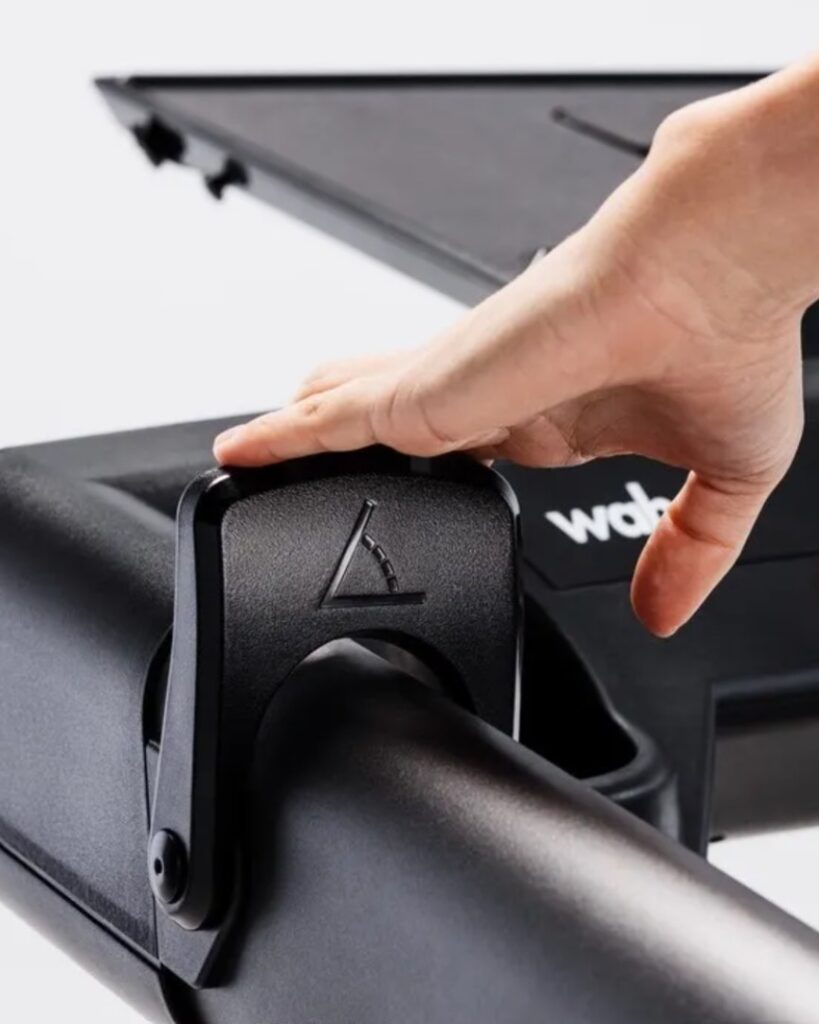
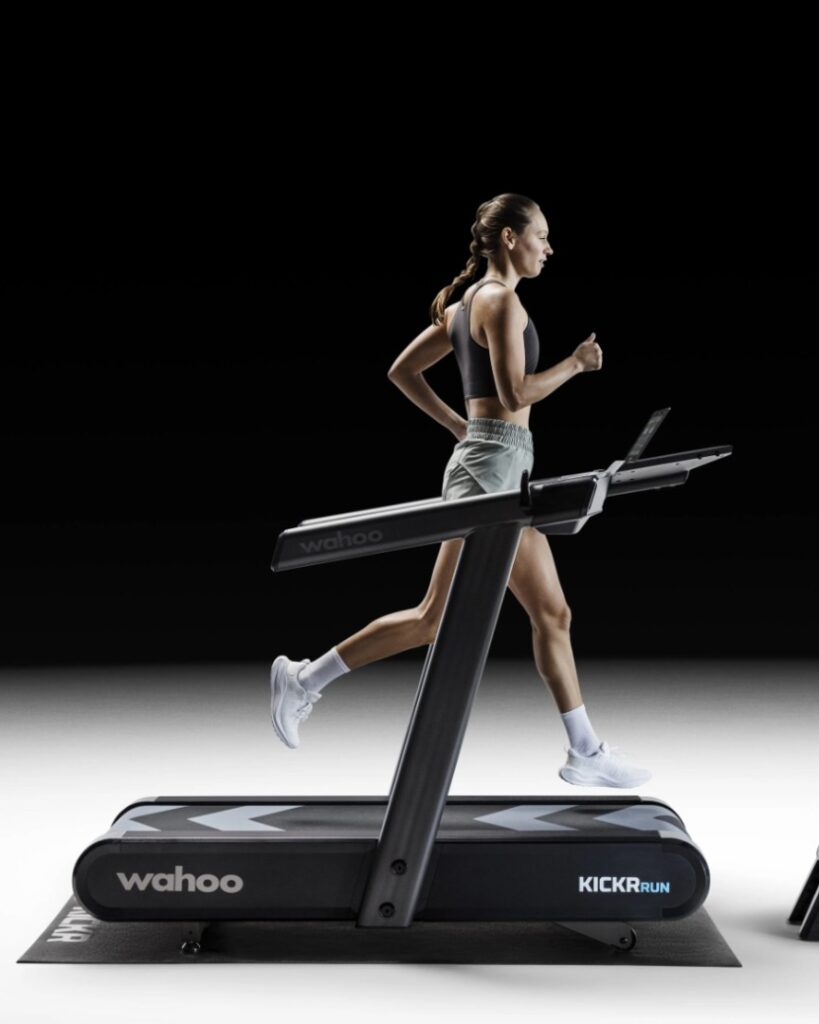
THOMAS: The Wahoo Kickr Run has made my training feel more like running outdoors and is certainly more engaging than your standard treadmill experience. I love being able to lock into the training pace while still being challenged by different elevation changes that mimic the real world. Since getting the Kickr Run I’ve done almost every speed session on the treadmill, which is a big change for me. Also, the RunFree mode is nice to have but not my favorite feature of the tool. I feel the real value of the Kickr Run is connecting it to other apps and getting virtual runs that keep your runs from feeling like you’re on the dreadmill.
I think I can justify the higher price of the Kickr Run based on the connectivity, the relatively quiet motor, the ability to rev up to 15 miles per hour, lateral tilt, and the RunFree feature. For most people, though, a basic treadmill — like the Landice we also have at home — will do the trick. For about half the price, the machine has been a super reliable option that Meg and I have turned to in the worst conditions of extreme heat or ice, even if it doesn’t have the fun Zwift integration.
You can pick up the Wahoo Kickr Run for $4,999 from Wahoo using the buttons below.
Buy The TreadmillHave something to say? Leave a Comment

As the founder of Believe in the Run, Thomas’s goal is to help runners pick the shoes and gear that will make their running experience the best that it can be.
More from Thomas
